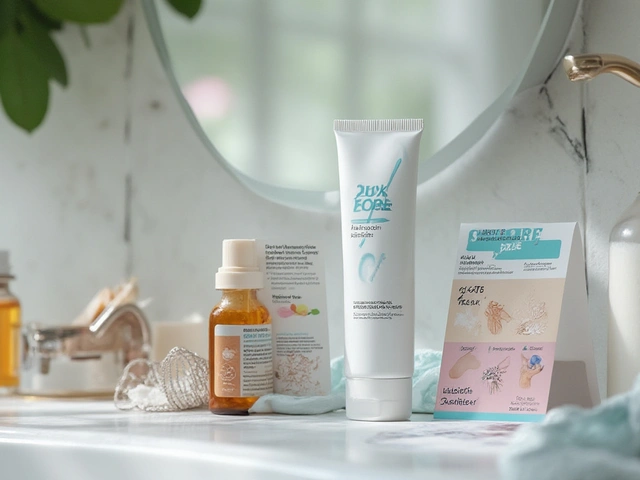Skincare Made Simple: Everyday Tips and When to Use Prescription Creams
If you’ve ever scratched a rash and wondered if you should just pop a bottle of cream, you’re not alone. Good skin care starts with the basics: gentle cleansing, keeping moisture in, and protecting from the sun. That’s it, really. In most cases, a mild soap and a good moisturizer will keep your skin happy.
When a rash shows up, the first thing to ask yourself is whether it’s caused by a fungus, an irritation, or something deeper. A fungal infection often looks scaly, itchy, and may have a ring‑like shape. That’s where over‑the‑counter or prescription antifungal creams, like terbinafine, step in. They work by stopping the fungus from growing, and they’re usually applied twice a day for a couple of weeks.
Choosing the Right Antifungal Cream
For toddlers, you want a cream that’s fragrance‑free and safe if they put a finger in their mouth. Look for “terbinafine” or “clotrimazole” on the label and check the concentration – 1% is standard for kids. Apply a thin layer to clean, dry skin, and wash your hands afterward. If the rash doesn’t improve after a week, it’s time to see a doctor.
When a Corticosteroid Cream Is Needed
Some skin problems, like eczema flare‑ups or severe dermatitis, need a bit more power. That’s where corticosteroid creams such as Aristocort come into play. They calm down inflammation and reduce itching quickly. The key is to use the lowest strength that works and only for the short period your doctor recommends. Over‑use can thin the skin, so follow the instructions to the letter.
Now, you might wonder how to get these prescription creams safely. In the UK, the best route is through a registered online pharmacy that asks for a valid prescription. Sites that verify their licences and protect your data are the way to go. Avoid weird offers that promise “instant delivery without a prescription” – they’re usually scams.
Beyond creams, remember that everyday habits protect your skin. Use a gentle, fragrance‑free cleanser, slap on a moisturizer while your skin is still damp, and reapply sunscreen every two hours when you’re outdoors. Those three steps cut down the need for any medicated cream in the first place.
If you ever feel unsure – whether it’s about a new rash, the right strength of cream, or where to order it – a quick chat with your pharmacist can save you a lot of guesswork. They’ll confirm if a product is right for you and point you to a trustworthy online pharmacy if you need one.
Bottom line: keep it simple, treat fungal infections with appropriate antifungals, reserve steroid creams for stubborn inflammation, and always buy from legit sources. Your skin will thank you, and you’ll avoid costly mistakes down the road.
Benzoyl Peroxide: Deep Dive Into Its Skincare Superpowers and Uses
Explore the science, effectiveness, and safety of benzoyl peroxide for acne, industrial uses, and more. Learn practical tips, fun facts, and real data.





